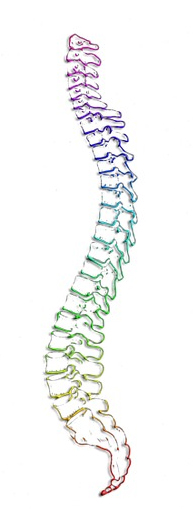 Before beginning a discussion of general statistics relating to spinal cord tumors, it is important to note up front several key issues.
Before beginning a discussion of general statistics relating to spinal cord tumors, it is important to note up front several key issues.
First, oncologists do not generally distinguish between benign (non-cancerous) or malignant (cancerous) spinal cord tumors. Both kinds can be extremely dangerous, and even deadly. The spinal cord is a critical piece of the body’s central nervous system, and as tumors grow (whether benign or malignant) and press on the delicate tissues of the spinal cord, they can significantly compromise the functioning of this critical organ. For this reason, oncologists prefer to use the term “tumor” versus “cancer” when discussing “cancers” of the spinal cord.
Second, together the brain and the spinal cord comprise the central nervous system. Therefore, oncologists generally classify tumors of the central nervous system as one group and most statistics include both spinal cord tumors and brain tumors. As one group, tumors of the central nervous system are the second-most common type of cancer in children (after leukemia), accounting for about 25% of all childhood cancers. Within that broad category, tumors of the spinal cord are significantly less common than brain tumors.
Third, as with most types of childhood cancer, oncologists rarely use the term “cured”; instead, key statistics relating to prognosis are given as “5-year survival rates”. This term refers to the number of children who have survived at least five years after their initial diagnosis. However, it is only a general statistic and does not in any way predict an outcome for any one child. Each child’s individual prognosis depends on that child’s prognosis factors, their specific type of spinal cord tumor, and the child’s response to treatment.
What are the prognosis factors for spinal cord tumors in children?
The good news is that with advances in medical technology over the past decade, treatment options for children diagnosed with a spinal cord tumor are more focused, more powerful, and overall more effective, thereby increasing 5-year survival rates for many types of tumors. In general, about 3 out of 4 children with a tumor of the central nervous system will survive more than 5 years. However, this simple statistic hides a great deal of variation between specific types of tumors.
As noted above, each child’s “life expectancy” after diagnosis depends heavily on a unique assessment of his or her prognosis factors. These “prognosis factors” help determine the unique treatment approach, as well as potential for long-term survivorship. In general, the key prognosis factors for most types of brain and spinal cord tumors include:
- The type of tumor
- The tumor’s size at diagnosis
- The tumor’s location at diagnosis
- How quickly the tumor is growing (it’s “grade”)
- How much of the tumor can be removed with surgery (if surgery is possible)
- Whether the tumorous cells have certain gene mutations
- Whether the tumor has spread to other parts of the central nervous system
- Whether tumorous cells have spread beyond the central nervous system
- The child’s age at diagnosis
- The child’s functional abilities as impacted by the tumor at diagnosis
More about Childhood Spinal Cord Tumor Cancers:
- About Childhood Spinal Cord Tumor Cancer – Detection and Diagnosis
- Causes, Risk Factors, and Prevention of Childhood Spinal Cord Tumor Cancer
- What are the signs and symptoms of Childhood Spinal Cord Tumor Cancer?
- Spinal Cord Tumor Cancer Treatment
- Spinal Cord Tumor Cancer – Stages and Prognosis
- What is the expected life span of Childhood Spinal Cord Tumor Cancer?
- After Treatment – Living as a Childhood Spinal Cord Tumor Cancer Survivor
Learn More About the Different Types of Childhood Cancers:
- Childhood Brain Tumor Cancer (Brain Stem Tumors)
- Spinal Cord Tumor Cancer
- Childhood Neuroblastoma Cancers
- Childhood Hodgkin Lymphoma Cancers
- Non-Hodgkin Lymphoma Cancers
- Wilms tumor (Kidney Tumors)
- Rhabdomyosarcoma
- Retinoblastoma
- Bone cancer (including osteosarcoma and Ewing sarcoma)
- Leukemia Cancers: Acute lymphocytic (lymphoblastic) leukemia (ALL) Acute myelogenous leukemia (AML); Juvenile myelomonocytic leukemia (JMML)
- Hepatoblastoma (Liver Cancer)
- Rhabdoid Tumors
Together, we can make a difference.
Donate today because kids can’t fight cancer alone®.
About American Childhood Cancer Organization
The American Childhood Cancer Organization was founded in 1970 by parents of children and adolescents diagnosed with cancer. As the nation’s oldest and largest grassroots organization dedicated to childhood cancer, ACCO is committed to shaping policy, supporting research, raising awareness, and providing free educational resources to kids with cancer, survivors, and their families. Additionally, ACCO is the sole U.S. member of Childhood Cancer International (CCI) and has helped support more than half a million families over the past 50 years. Help make childhood cancer a national health priority because kids can’t fight cancer alone®.
For more information about how ACCO can help your family, call 855.858.2226 or visit:



